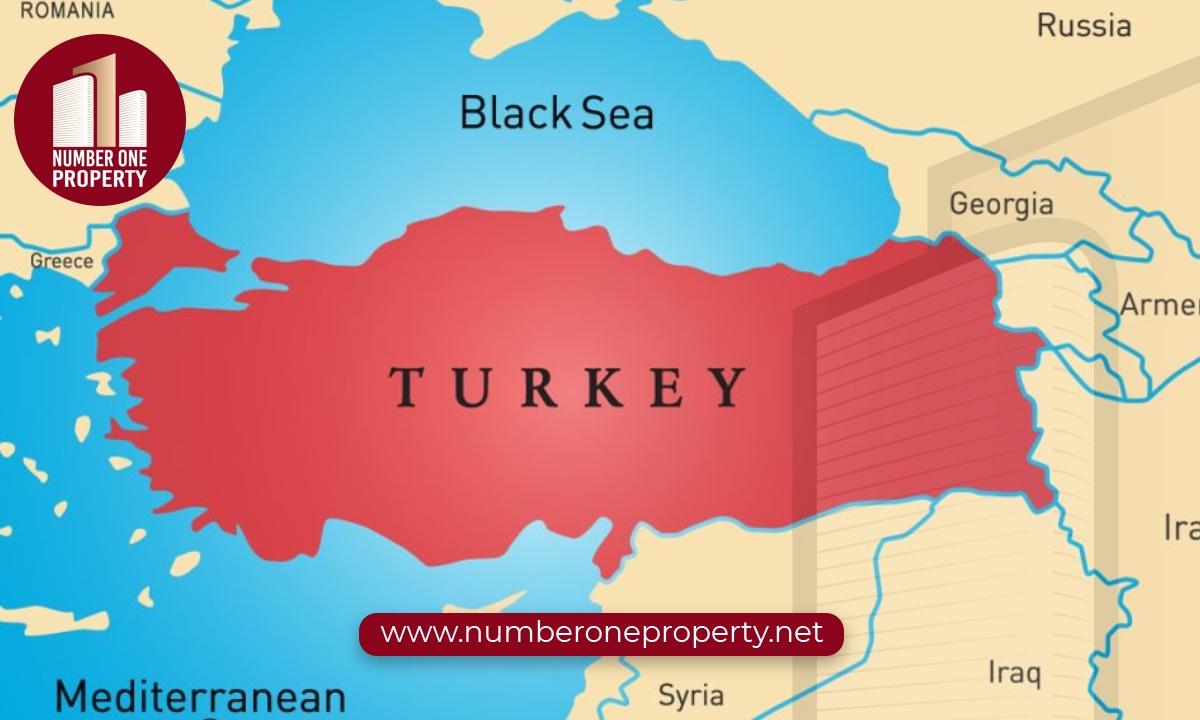Turkey, a nation straddling Europe and Asia, is renowned for its rich history, diverse culture, and booming economy.
The country's urban landscape is a tapestry of populous cities, each boasting unique attributes and playing significant roles in Turkey's socio-economic fabric.
This article explores Turkey's largest cities, history, culture, and economic significance.
Brief History Of Turkey
Turkey's history is a rich tapestry woven with empires, conquests, and cultural exchanges. Its story begins long before the establishment of the Ottoman Empire, which emerged as a formidable power in the late 13th century.
The Ottoman Empire shaped much of Turkey's cultural and political landscape by expanding across three continents.
Ankara, the modern capital, replaced Istanbul, the historic center and former capital of the Byzantine and Ottoman Empires.
Istanbul, a cultural capital with a long history, epitomizes the blend of Eastern and Western influences that characterize much of Turkey's history.
Turkey has been a pivotal region throughout history due to its strategic location between Europe and Asia. Its rich cultural heritage, influenced by various civilizations, from the ancient Greeks and Romans to the Seljuk Turks and Ottomans, has left an indelible mark on the country's identity.
Geographical and Demographic Features
Turkey, straddling the bridge between Europe and Asia, presents a fascinating geographical and demographic diversity study. The Turkish population density map reveals a country with varied population distribution.
Urban areas, particularly in cities like Istanbul and Ankara, show higher density, reflecting Turkey's status as a significantly populated country.
Compared with the bustling cities, rural areas offer a glimpse into Turkey's agricultural and natural landscapes. The country is bordered by the Mediterranean and Black Seas, influencing its climate, culture, and economy.
These geographical features contribute to Turkey's diverse demographic makeup, blending urban modernity and rural traditions and shaping the nation's character.
Economic and Administrative Aspects
Turkey's economic landscape is dynamic and diverse, shaped significantly by its major cities.
The biggest cities in Turkey, such as Istanbul, Ankara, and Izmir, are populous metropolitan areas and economic powerhouses.
Istanbul is a financial and commercial hub, hosting numerous industries and businesses.
Turkish cities, including other significant ones like Bursa, Antalya, and Gaziantep, contribute to the country's industrial strength.
Industries such as textiles, automotive, agriculture, and tourism are vital to the national economy.
The government is crucial in administrating economic policies to balance urban development with regional growth and sustainability.
Tourism and Attractions
Turkey, celebrated for its rich cultural tapestry and breathtaking landscapes, has many tourist attractions.
Istanbul, the nation's largest city, stands as a historical marvel. Its Hagia Sophia, a testament to architectural brilliance, has been a church, a museum, and now a mosque.
The Topkapi Palace offers a glimpse into the opulent lifestyle of Ottoman sultans, while the Grand Bazaar buzzes with vibrant commerce, reflecting centuries of trade and interaction.
Beyond Istanbul, Turkey's other cities each contribute their unique allure. Turkey's array of attractions is diverse, from the ancient ruins of Ephesus and the striking rock formations of Cappadocia to the azure waters of Antalya's beaches and the thermal baths of Pamukkale.
The country's blend of historical sites, rich culture, and stunning natural landscapes offer a unique and enriching experience for travelers seeking to immerse themselves in a land where the past and present coexist harmoniously.
Expanding further, Ankara, the capital, blends its modern government quarters with ancient sites like the Anatolian Civilizations Museum. With its Aegean charm, Izmir is a gateway to classical antiquity sites.
The southeastern city of Gaziantep is famed for its culinary delights and the Zeugma Mosaic Museum. Each Turkish locale enriches the country's tapestry, from the tranquil Mediterranean and Aegean coasts to the bustling streets of Bursa and the historical depths of Konya.
With its myriad urban and natural experiences, Turkey offers an unforgettable journey through time and culture.
Top 10 Largest Cities in Turkey
The country we know as Turkey is officially called the Republic of Turkey (with the accepted English spelling of Türkiye). The country was established in 1923 after the end of the Ottoman Empire. Since Turkey uses the metric system, the country has an area of 783,562 km2.
In Turkey, nearly 50% of the land is used for agriculture, and another 15% is forested. The country is home to the only city that spans two continents. That city is Istanbul, which is officially on both the continent of Europe and Asia.
Turkey has the privilege of bordering several bodies of water, meaning plenty of beaches. This includes the coastline on the Black, Aegean, and Mediterranean Seas. The country is home to 19 World Heritage sites.
Known for the Byzantine and Ottoman Empires, modern-day Turkey packs a punch with all types of people, whether travelers exploring the exciting sights of Istanbul or historians seeking out remnants of Constantinople. But what are the biggest cities in Turkey, and what’s there to see?
Istanbul
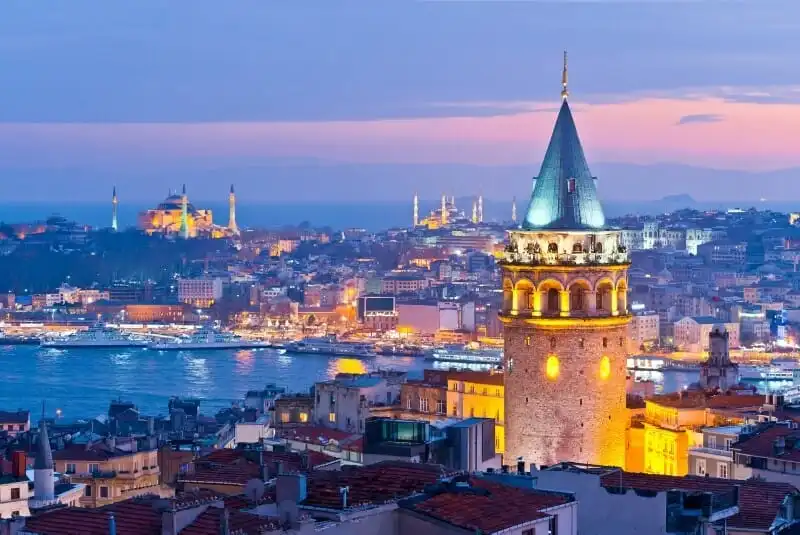
Istanbul, Turkey's largest city, historic center, and former capital of the Ottoman Empire, is where East meets West.
Turkey's largest city, With millions of inhabitants, Istanbul is the epitome of a populated city, blending ancient history with a modern vibrancy.
It's the cultural capital of Turkey, boasting numerous museums, historic sites, and tourist attractions.
Once the capital of the Byzantine and Ottoman Empires, the city is home to iconic landmarks like the Hagia Sophia, Blue Mosque, and Topkapi Palace.
Istanbul's unique geographical location on the Bosphorus Strait adds to its allure, offering stunning views and a strategic position that has been pivotal throughout history.
The city's vibrant streets, bustling bazaars, and diverse culinary scene reflect a melting pot of cultures.
Today, Istanbul continues to fascinate visitors with its seamless fusion of the ancient and the contemporary, making it a must-visit destination for travelers worldwide.
Real Estate in Istanbul
Real estate in Istanbul, a city known for its unique blend of history and modernity, is diverse and dynamic.
The market caters to various preferences, from luxurious apartments overlooking the Bosphorus to historic homes in its ancient quarters.
The city's continuous development, coupled with its strategic location, makes it an attractive hub for both local and international investors.
With the growth of infrastructure and the expansion of residential and commercial projects, Istanbul's real estate market offers a wealth of opportunities for those seeking to invest in a city that bridges continents and cultures.
Read Also Buying Property in The City Center: A Comprehensive Guide
Ankara
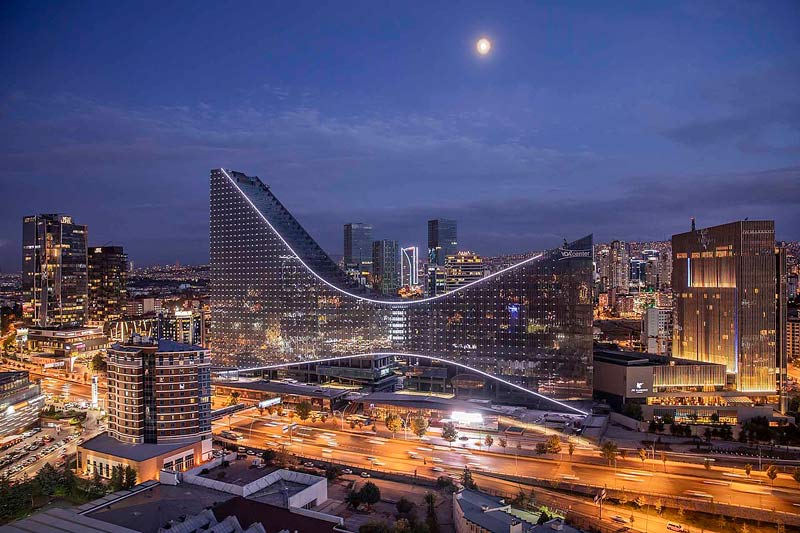
Ankara, Turkey's capital, stands as the second-largest city. It's the center of the Turkish government and plays a pivotal role in the nation's administration.
Ankara is known for its urban areas, significant government buildings, and as a hub for industry and commerce.
Ankara is a city steeped in history yet bustling with modern energy. It is located in the heart of the country, the administrative center, housing all government branches and foreign embassies.
Unlike Istanbul's historic charm, Ankara offers a more contemporary feel with its skyscrapers, shopping malls, and universities.
The city is also rich in cultural heritage, exemplified by the Anıtkabir, the mausoleum of Mustafa Kemal Atatürk, and the Museum of Anatolian Civilizations.
Ankara’s blend of modern urban life and historical significance makes it a unique and vital city in Turkey's social and political landscape.
Izmir
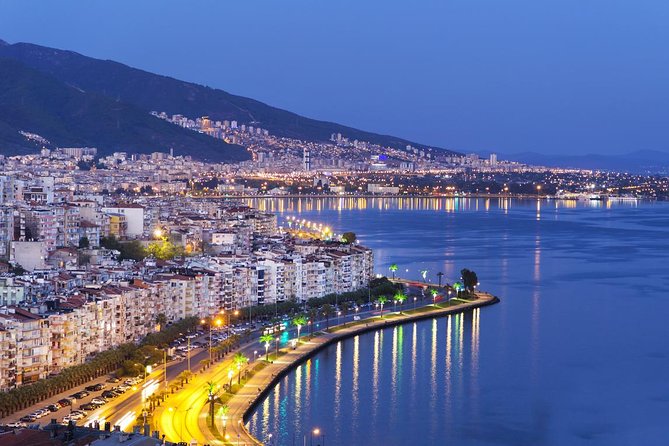
Izmir, the third largest city, is known for its cosmopolitan atmosphere and as a major port city.
It's a city home to a rich blend of Greek and Turkish cultures, making it a unique spot for travelers.
Known for its vibrant atmosphere and beautiful Aegean coastline. It is a city that seamlessly blends ancient history with modern living.
Famous for its ancient Agora, Izmir also boasts impressive Roman ruins and the iconic Clock Tower. The city's waterfront Kordon promenade offers stunning sea views and is popular with locals and tourists.
Izmir's rich cultural heritage, contemporary art scene, bustling markets, and lively nightlife make it a dynamic and appealing destination for visitors seeking to blend history, culture, and relaxation by the sea.
This city hosts several cultural festivals annually, attracting a diverse audience.
Its rich Greek and Roman history is evident in sites like Ephesus and the Temple of Artemis, one of the Seven Wonders of the Ancient World.
The city's bazaars, such as Kemeraltı, offer a vivid shopping experience. For nature enthusiasts, Izmir is close to idyllic beaches and natural reserves.
Its culinary scene blends Aegean flavors, offering fresh seafood and traditional Turkish dishes. Izmir's welcoming atmosphere and cultural richness make it a memorable destination.
Bursa
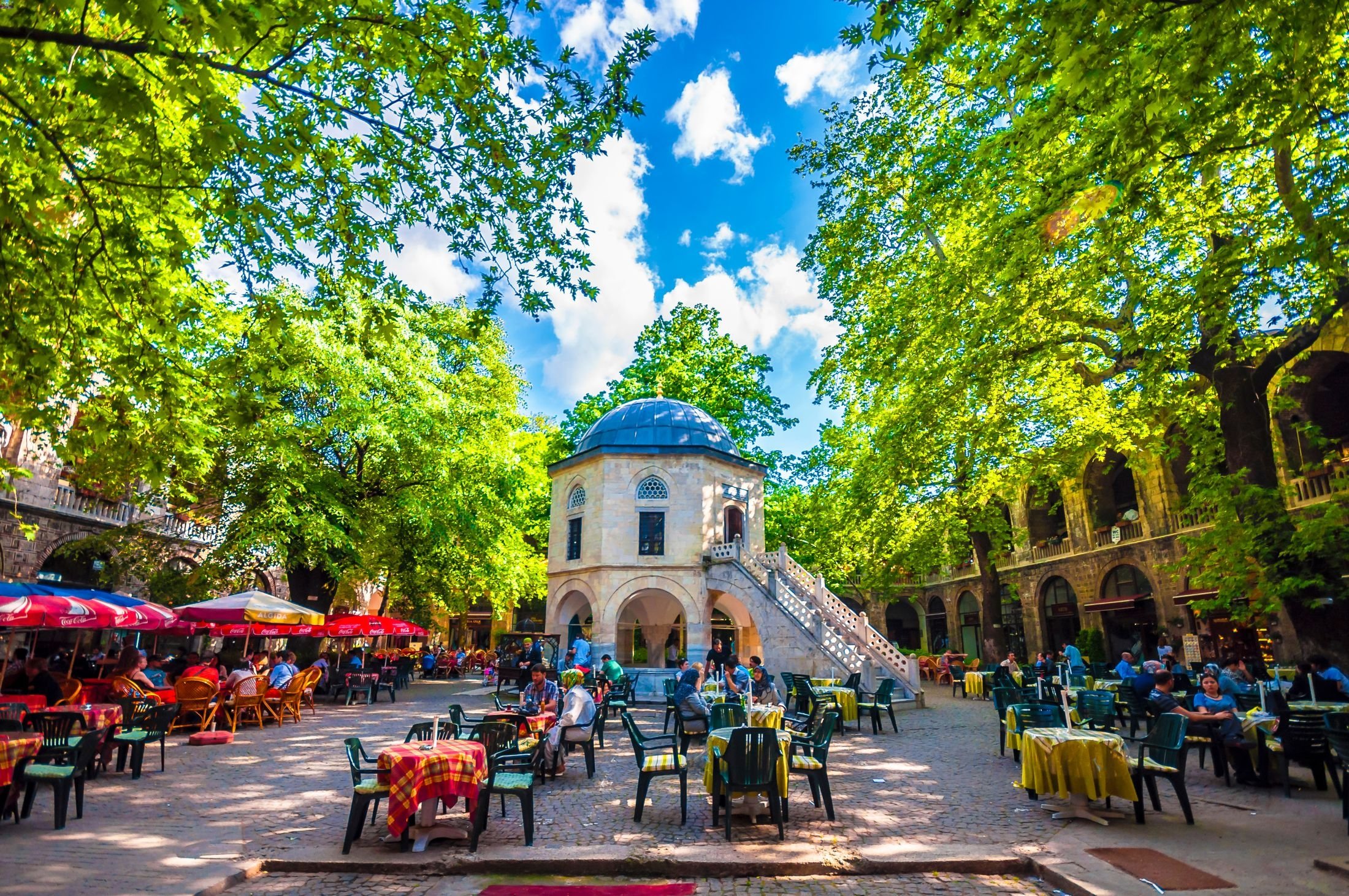
Bursa, Turkey's fourth-largest city, is a vital economic center. Bursa is significant in the automotive and textile industries.
Bursa, located in northwestern Turkey, is a city that harmoniously combines historical significance with natural beauty.
Known as the birthplace of the Ottoman Empire, Bursa is rich in historical sites, including the Grand Mosque and the Tombs of Osman and Orhan, the empire's founders.
The city is also famous for its thermal baths and lush green mountains, particularly Uludağ, a popular skiing destination.
Bursa's silk market and bazaars reflect its past as a major trade center on the Silk Road. With its unique blend of history, culture, and nature, Bursa offers a captivating experience for visitors.
Bursa, often called "Green Bursa" due to its lush parks and gardens, is renowned for its historical significance and natural beauty. The city's architecture displays a rich Ottoman heritage, notably in landmarks such as Yeşil Mosque and the Koza Han, a market dedicated to the silk trade.
Bursa is also famous for its cuisine, especially the Iskender kebab. Additionally, the city serves as a gateway to the thermal springs of Çekirge and the ski slopes of Uludağ, making it a destination that appeals to history enthusiasts and nature lovers alike.
Antalya
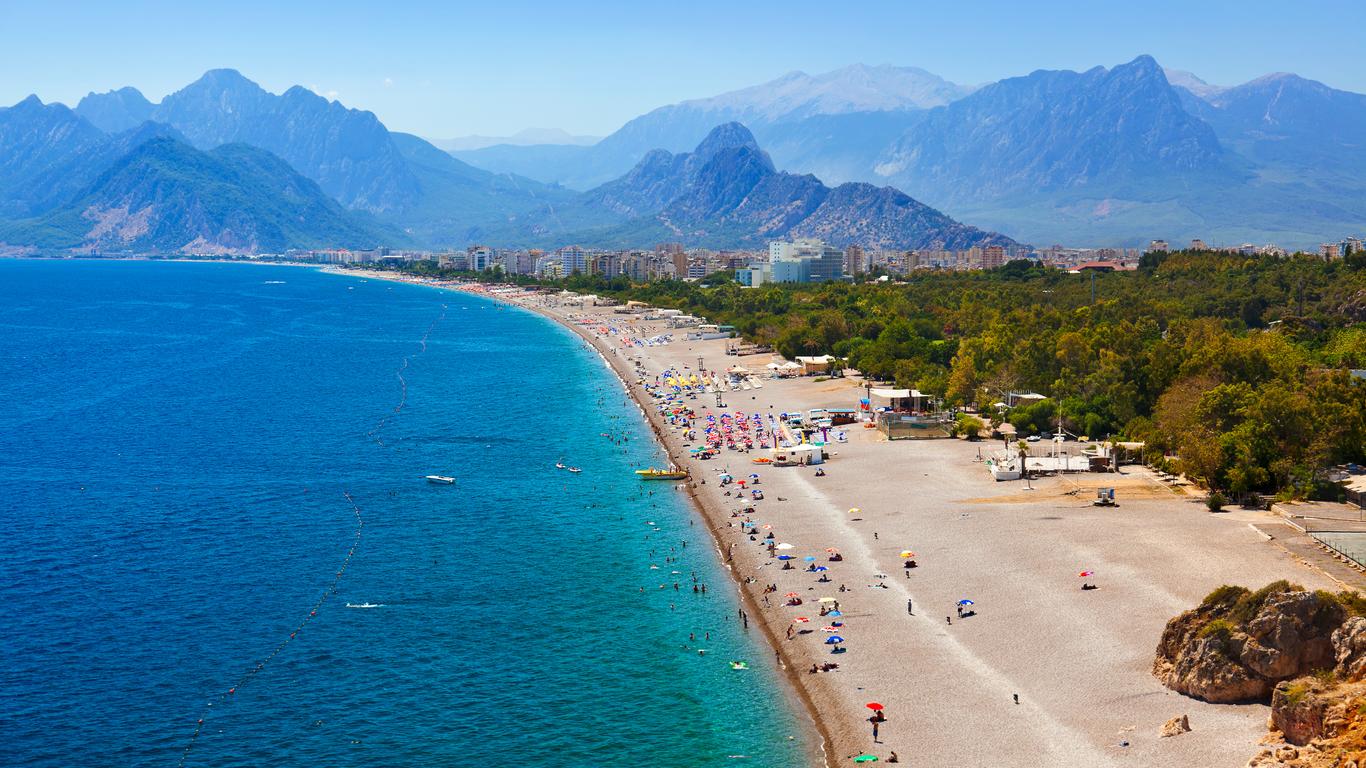
Antalya is a tourism hotspot thanks to its stunning beaches and resorts along the Mediterranean.
Antalya, a stunning city on Turkey's Mediterranean coast, is famed for its beautiful beaches, historical sites, and vibrant resort atmosphere.
Known as the Turkish Riviera, it's a popular destination for sun-seekers and history enthusiasts alike.
The city's Old Town, Kaleiçi, is a charming area with narrow, winding streets, old houses, and the ancient Hadrian’s Gate.
Antalya also serves as a gateway to the region's numerous archaeological sites like Aspendos and the ruins of Perge. With its combination of natural beauty, historical richness, and modern amenities, Antalya offers a diverse experience to its visitors.
Beyond its historical charm, Antalya is renowned for its stunning natural attractions, such as the Düden Waterfalls and Konyaaltı Beach.
The city's vibrant nightlife, luxury resorts, and marinas cater to diverse tourists.
For outdoor enthusiasts, activities like hiking in the Taurus Mountains and sea kayaking over sunken cities offer thrilling experiences.
Antalya's blend of the ancient and the contemporary, set against a backdrop of spectacular natural beauty, makes it a must-visit destination on Turkey's Mediterranean coast.
Gaziantep
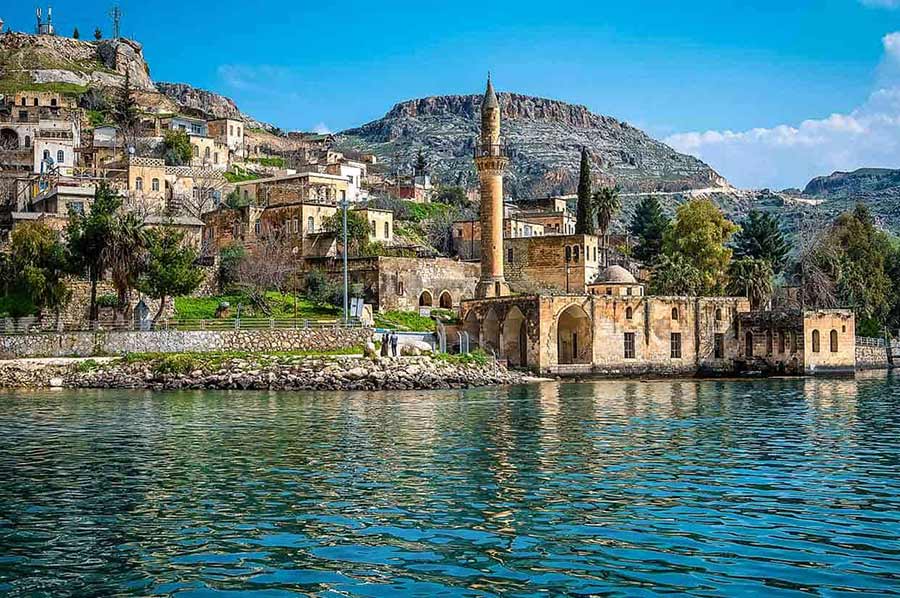
Gaziantep, the sixth largest city, is renowned for its deep-rooted traditions and historical significance.
Gaziantep is famous for its culinary delights, and Konya is renowned for its spiritual heritage.
Gaziantep, located in southeastern Turkey, is renowned for its rich culinary heritage and historical significance. The city is famous for its pistachios and baklava and offers a unique gastronomic experience.
Gaziantep is also home to the Zeugma Mosaic Museum, which houses one of the world's largest collections of ancient mosaics.
The city's history, deeply rooted in the ancient civilizations that once thrived in the region, is evident in its architecture and cultural landmarks.
Gaziantep's historical richness and culinary excellence blend, making it a unique and intriguing destination.
In addition to its culinary and historical attractions, Gaziantep boasts a vibrant cultural scene. The Gaziantep Castle and the old city offer a glimpse into the city's past, while its bustling bazaars provide an authentic taste of local life.
The city is also a gateway to exploring the Southeastern Anatolia region, known for its unique landscapes and cultural diversity.
Gaziantep's mix of tradition and modernity and its friendly atmosphere make it an enriching experience for those seeking to explore the deeper layers of Turkey's cultural mosaic.
Konya
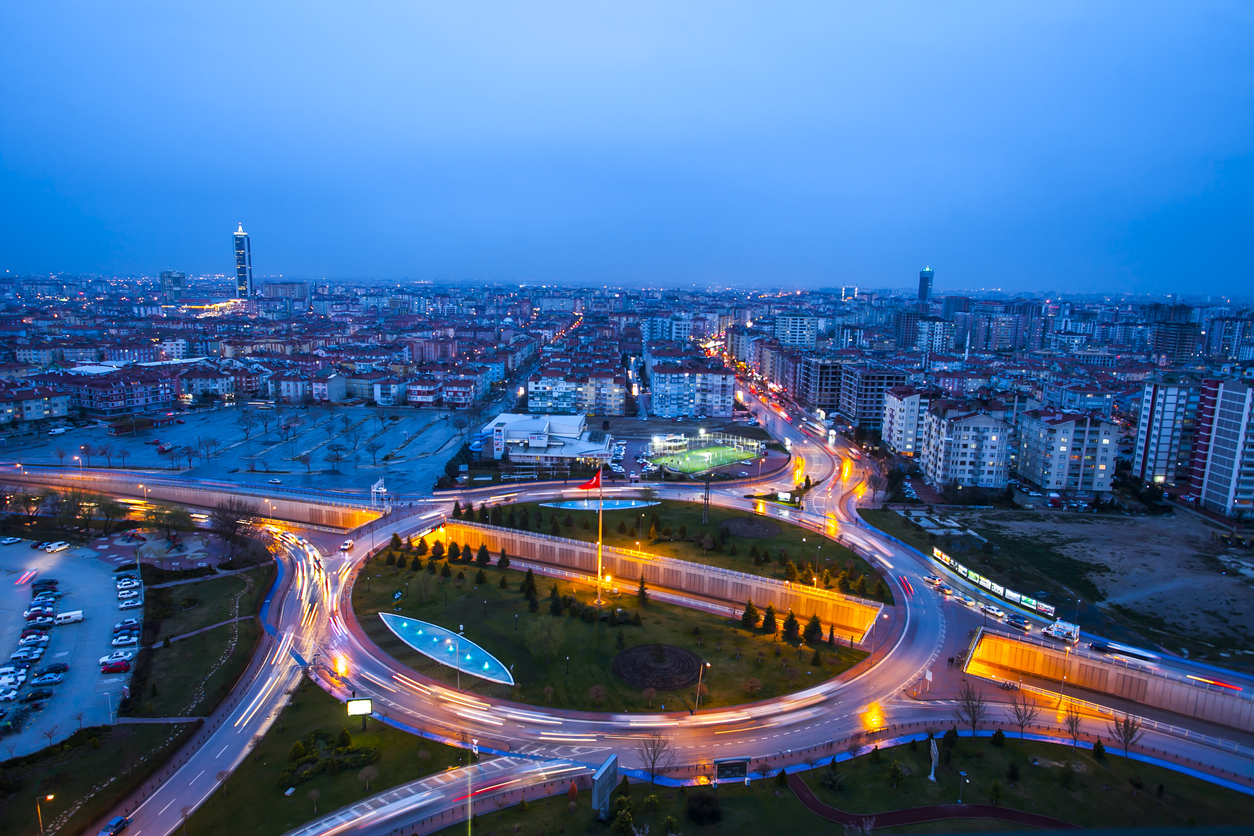
Konya, the seventh-largest city in Turkey, is a city of great historical and cultural significance. Known as the city of Rumi, a 13th-century Persian poet and Sufi mystic, Konya attracts visitors worldwide to the Mevlana Museum, once the Whirling Dervishes' lodge.
The city's rich history is intertwined with Seljuk architecture, visible in landmarks like the Alaeddin Mosque and the ruins of the Seljuk Palace.
Konya also serves as a center for agricultural and industrial activity, contributing significantly to Turkey's economy. This blend of spiritual heritage, historical architecture, and economic vitality makes Konya a unique and vital city in Turkey.
In addition to its spiritual and historical significance, Konya is renowned for its traditional Turkish cuisine, including the famous Etli Ekmek (a type of flatbread with meat topping) and çörek (a sweet bread).
The city is surrounded by vast wheat fields, emphasizing its role in agriculture. Konya's cultural landscape is further enriched by annual events like the Seb-i Arus ceremonies, commemorating Rumi's union with the divine.
Its mystical, historical, and culinary blend makes Konya a fascinating destination that reflects the depth and diversity of Turkey's cultural heritage.
Adana
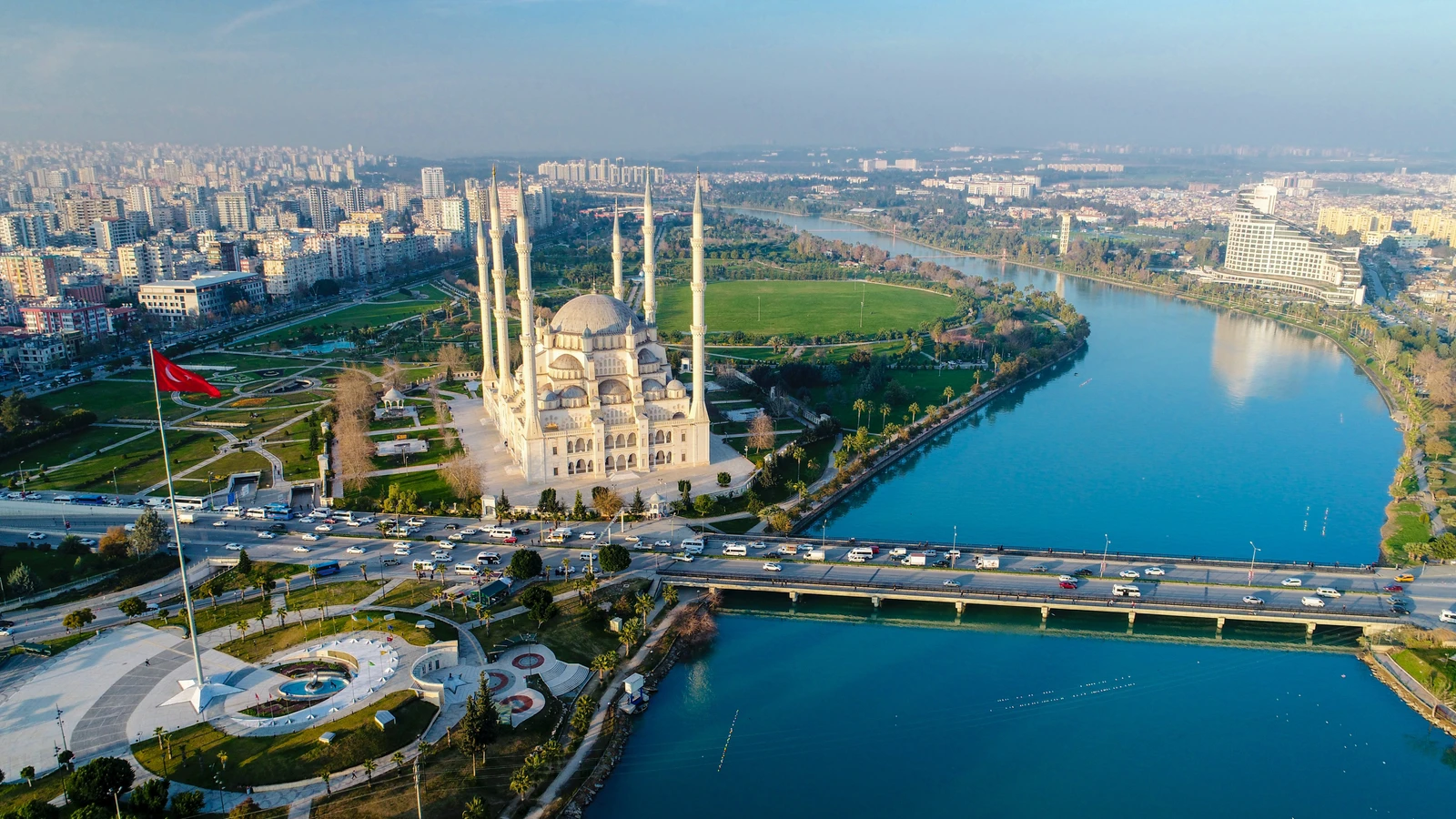
Adana, the eighth-largest city in Turkey, plays a crucial role in the country's industrial and agricultural landscape. It is mainly known for its vast cotton fields and agricultural produce, contributing significantly to Turkey's textile and food industries.
Adana's industrial sector is diverse, encompassing everything from manufacturing to chemicals. The city is also famous for its culinary offerings, especially the Adana kebab, a staple in Turkish cuisine.
Its strategic location on the Seyhan River enhances its industrial and agricultural significance, making Adana a key player in Turkey's economic growth.
Adana's vibrant cultural scene complements its industrial and agricultural importance. The city hosts several cultural festivals, including the Orange Blossom Carnival. The Stone Bridge and Sabancı Central Mosque, one of the largest in the Middle East, are landmarks of historical significance.
Adana's position in the Çukurova Plain, a fertile agricultural region, further underlines its role as a vital agricultural hub. The blend of urban development, rich cultural heritage, and economic significance makes Adana a multifaceted and dynamic city within Turkey's national landscape.
Mersin
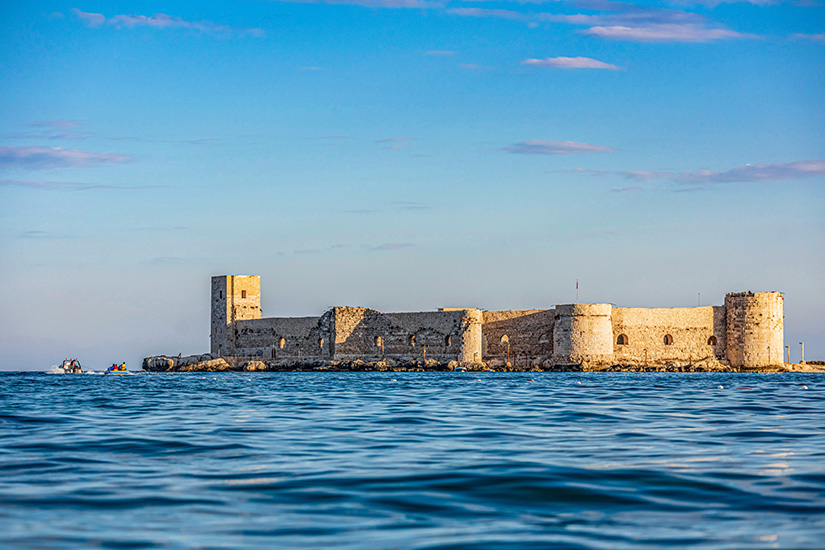
Mersin, the ninth-largest city in Turkey, is a critical economic player due to its large port, one of the most important in Turkey.
The seaport of Mersin significantly contributes to the country's trade and economy, handling a vast array of goods, from agricultural products to industrial materials.
The city is known for its modern infrastructure, bustling commercial centers, and rich cultural heritage, including historical sites and beautiful Mediterranean beaches.
Mersin's combination of a strategic port, economic vitality, and cultural richness makes it an essential city in Turkey's national and economic landscape.
Beyond its economic significance, Mersin boasts a diverse cultural scene. The city is home to ancient historical sites like the Roman-era Soli-Pompeiopolis and the Maiden's Castle.
The lush Taurus Mountains and the picturesque Mediterranean coast offer natural beauty and recreational opportunities. Mersin's cosmopolitan atmosphere, combined with its rich historical tapestry, provides a unique blend of the ancient and the modern.
This and its strategic port make Mersin a vital and vibrant city in Turkey's socio-economic and cultural fabric.
Kayseri
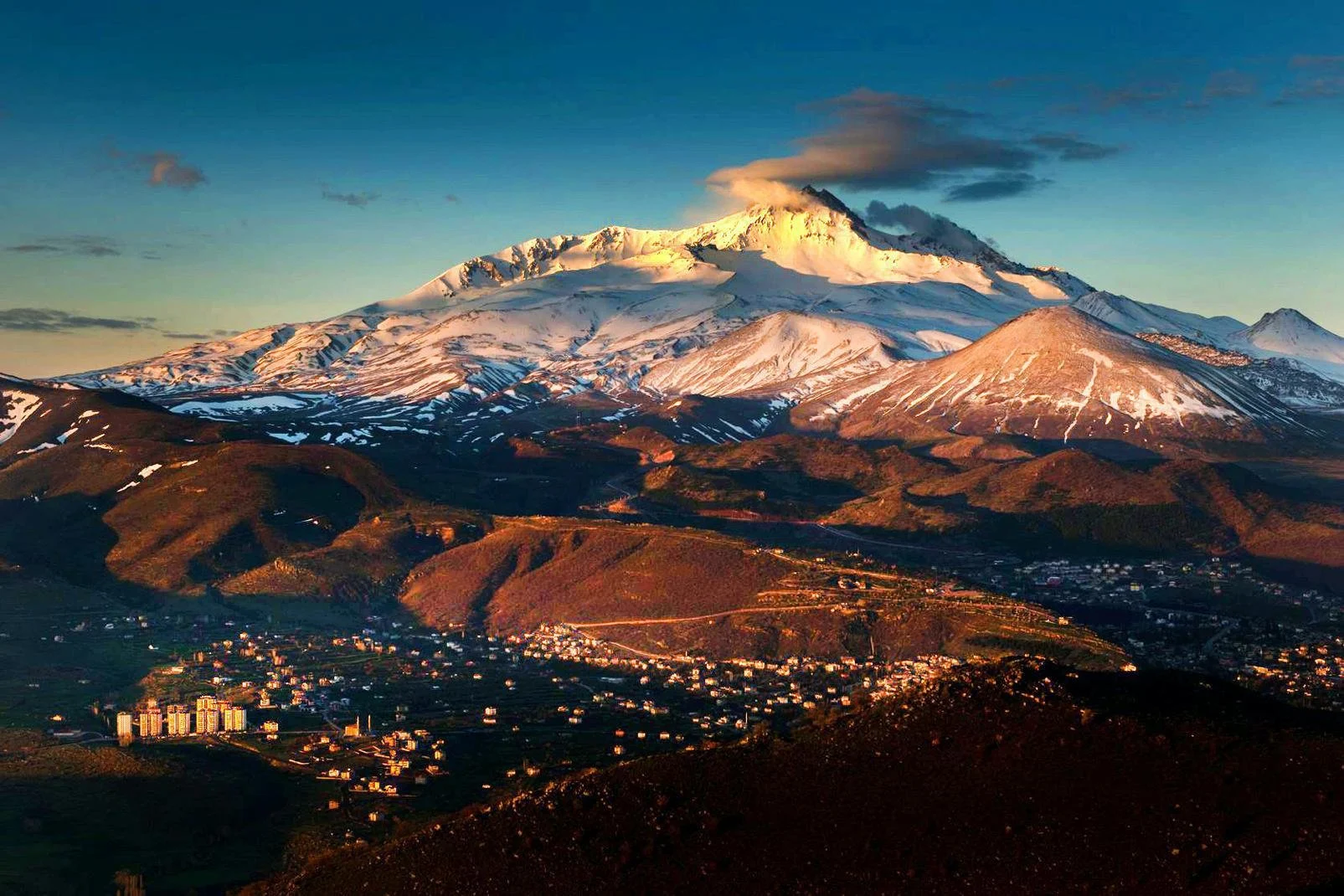
Kayseri, the tenth-largest city in Turkey, is rapidly emerging as a symbol of the country's urban and economic evolution.
Known for its industrial prowess, particularly in textiles and trade, Kayseri is a driving force in Turkey's economy.
The city smartly integrates its rich cultural heritage with modern developments, visible in landmarks like the Seljuk-era architectural wonders.
This blend of historical richness and contemporary growth positions Kayseri as a prominent example of Turkey's new urban identity, showcasing a balance between preserving the past and embracing the future.
Beyond its economic growth, Kayseri is also known for its unique culinary offerings, including the famous Turkish dish mantı.
The city's location at the foot of Mount Erciyes, one of Turkey's largest ski resorts, adds to its appeal as a tourist destination.
The combination of Kayseri's thriving economy, rich historical background, and natural beauty makes it a microcosm of Turkey's development, blending tradition with modernity seamlessly and vibrantly.
Conclusion
The largest cities in Turkey are not just populated areas; they are centers of culture, history, and economic power.
Each city contributes uniquely to Turkey's identity, making the country a mosaic of urban wonders worth exploring.
Whether it's Istanbul's historical grandeur, Ankara's governmental prowess, or Izmir's cultural blend, Turkey's cities are a testament to its rich past and dynamic present.
Related Articles:
From Villas to Apartments: Diverse Real Estate Investments in Istanbul
Exploring the New Istanbul Canal
Exploring the New Istanbul Airport: A Gateway to Modern Travel Luxury


